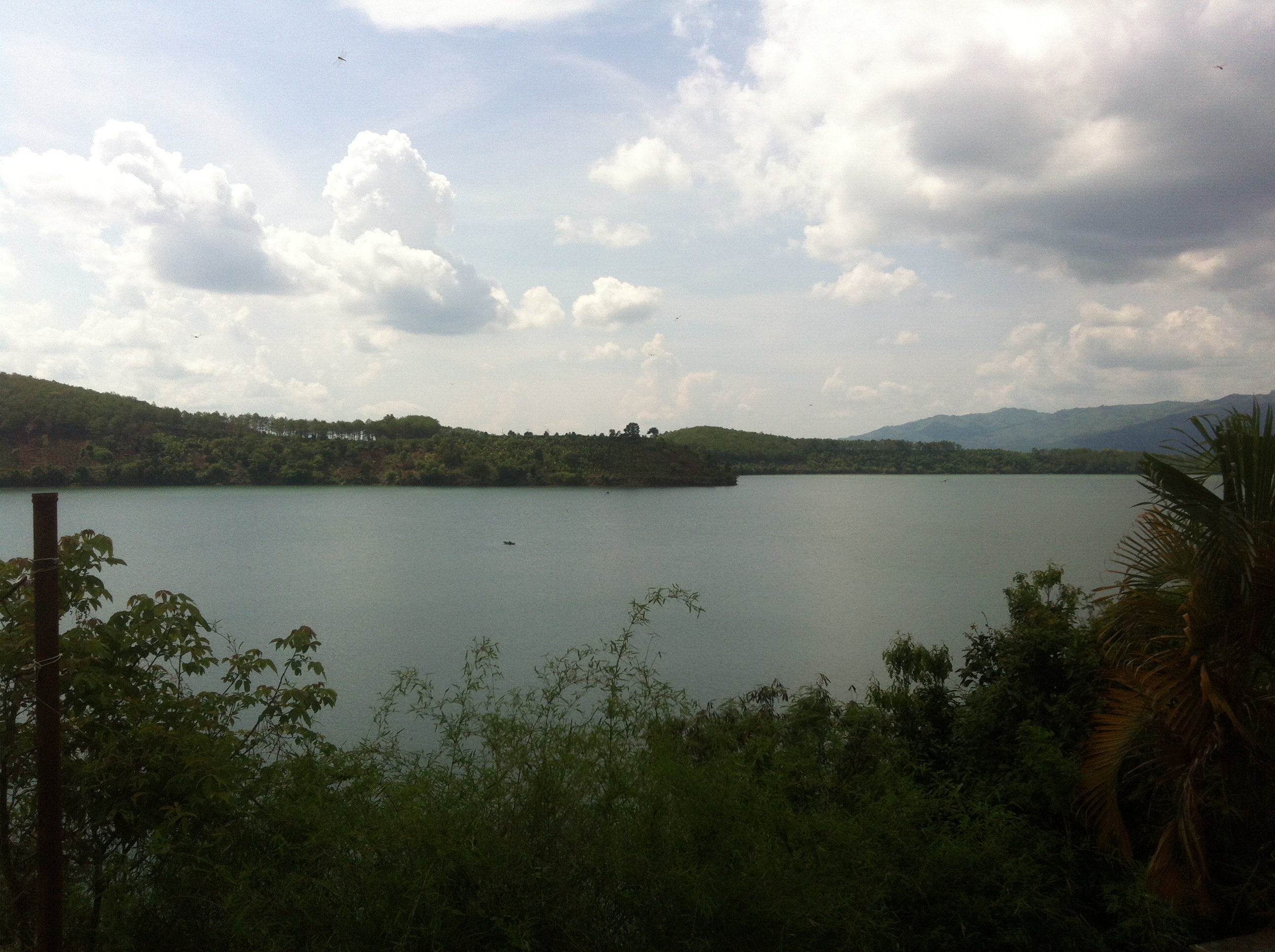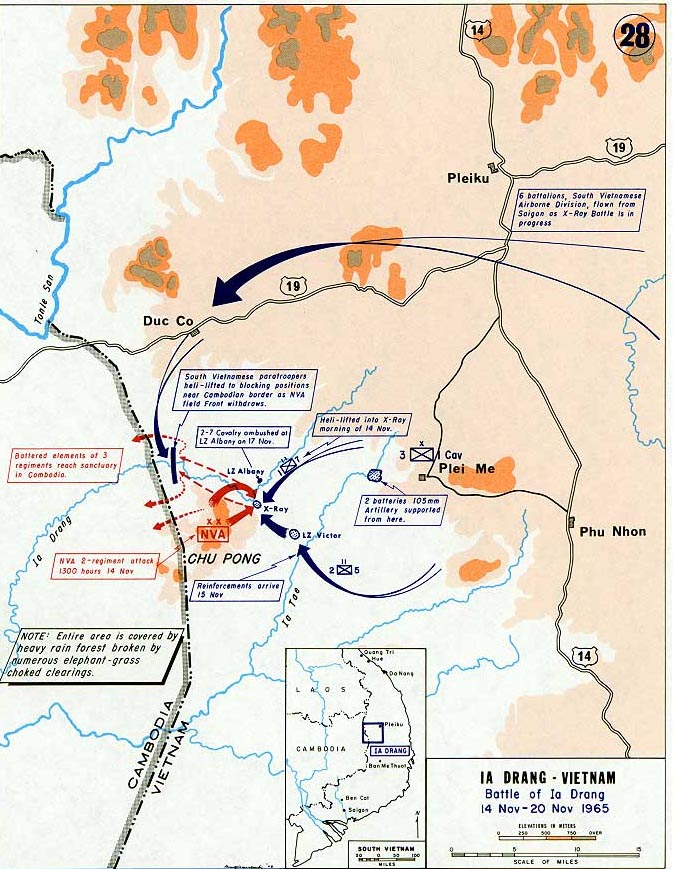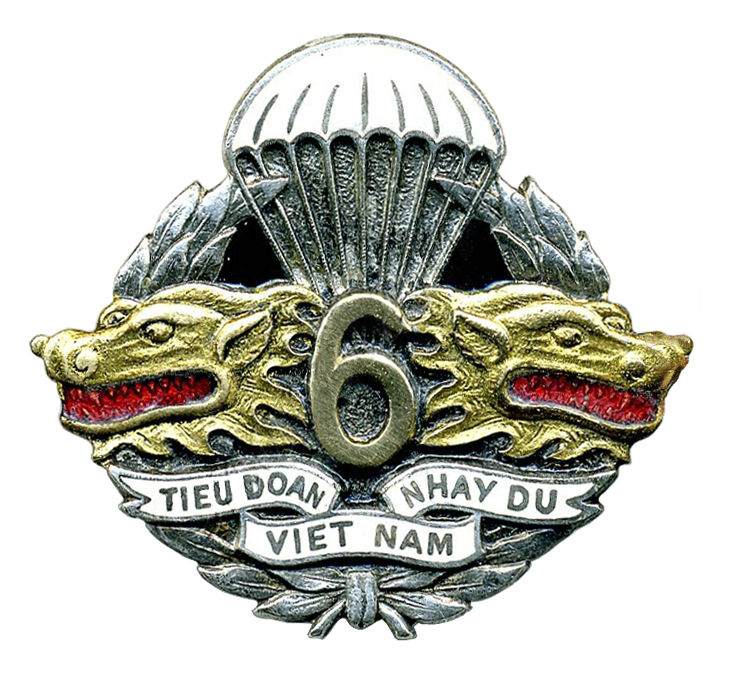|
Battle Of Mang Yang Pass
The Battle of Mang Yang Pass (also known as the Battle of An Khê or the Battle of Đắk Pơ) was one of the last battles of the First Indochina War which took place on 24 June 1954. The battle was one of the bloodiest defeats of the French Union forces, along with the battle of Dien Bien Phu shortly beforehand. Background ''Groupement Mobile No. 100'' ("Mobile Group 100" or G.M. 100) was a regimental task force unit of the French Far East Expeditionary Corps which was assembled as a convoy. It included the elite veteran UN '' Bataillon de Corée'' who fought in the Korean War at Chipyong-ni, Wonju and Heartbreak Ridge. Anxious to avoid a second disaster like the siege at Dien Bien Phu, the French Chief of Staff ordered G.M. 100 to abandon their isolated position in the Central Highlands. This was code named ''opération Églantine''. Ambush On June 24, 1954, G.M. 100 received orders to abandon its defensive positions at An Khê and fall back to Pleiku, some away over Rout ... [...More Info...] [...Related Items...] OR: [Wikipedia] [Google] [Baidu] |
First Indochina War
The First Indochina War (generally known as the Indochina War in France, and as the Anti-French Resistance War in Vietnam) began in French Indochina from 19 December 1946 to 20 July 1954 between France and Việt Minh (Democratic Republic of Vietnam), and their respective allies. Việt Minh was led by Võ Nguyên Giáp and Hồ Chí Minh. Most of the fighting took place in Tonkin in Northern Vietnam, although the conflict engulfed the entire country and also extended into the neighboring French Indochina protectorates of Laos and Cambodia. At the Potsdam Conference in July 1945, the Combined Chiefs of Staff decided that Indochina south of latitude 16° north was to be included in the Southeast Asia Command under British Admiral Mountbatten. The Japanese forces located south of that line surrendered to him and those to the north surrendered to Generalissimo Chiang Kai-shek. In September 1945, Chinese forces entered Tonkin, and a small British task force landed at city of S ... [...More Info...] [...Related Items...] OR: [Wikipedia] [Google] [Baidu] |
Pleiku
Pleiku is a city in central Vietnam, located in the Central Highlands region. It is the capital of the Gia Lai Province. Many years ago, it was inhabited primarily by the Bahnar and Jarai ethnic groups, sometimes known as the Montagnards or Degar, although now it is inhabited primarily by the Kinh ethnic group. The city is the centre of the urban district of Pleiku which covers an area of 261 km². As of 2003 the district had a population of 186,763. The city sits at the junction of several national roads— National Route 14 to Kon Tum in the north and Buôn Ma Thuột in the south and National Route 19 to Stœng Trêng in Cambodia in the west (via Ratanakiri Province) and to Bình Định Province in the east. The city is home to the Hoàng Anh Gia Lai football club. Pleiku is served by Pleiku Airport in the near outskirts of the city. History First Indochina War At the end of the First Indochina War, in June 1954, the French Army ''Groupe Mobile 100'' was orde ... [...More Info...] [...Related Items...] OR: [Wikipedia] [Google] [Baidu] |
Battle Of Ia Drang
The Battle of Ia Drang (, ; in English ) was the first major battle between the United States Army and the People's Army of Vietnam (PAVN), as part of the Pleiku Campaign conducted early in the Vietnam War, at the eastern foot of the Chu Pong Massif in the central highlands of Vietnam, in 1965. It is notable for being the first large scale helicopter air assault and also the first use of Boeing B-52 Stratofortress strategic bombers in a tactical support role. Ia Drang set the blueprint for the Vietnam War with the Americans relying on air mobility, artillery fire and close air support, while the PAVN neutralized that firepower by quickly engaging American forces at very close range. Ia Drang comprised two main engagements, centered on two helicopter landing zones (LZs), the first known as LZ X-Ray, followed by LZ Albany, farther north in the Ia Drang Valley. LZ X-Ray involved the 1st Battalion, 7th Cavalry Regiment and supporting units under the command of Lieutenant Colonel Hal ... [...More Info...] [...Related Items...] OR: [Wikipedia] [Google] [Baidu] |
We Were Soldiers
''We Were Soldiers'' is a 2002 war film written and directed by Randall Wallace and starring Mel Gibson. Based on the book ''We Were Soldiers Once… and Young'' (1992) by Lieutenant General (Ret.) Hal Moore and reporter Joseph L. Galloway, it dramatizes the Battle of Ia Drang on November 14, 1965. Plot In 1954 a French unit (based loosely on the Groupement Mobile No. 100) on patrol during the First Indochina War is ambushed by Viet Minh forces. Viet Minh commander Nguyen Huu An orders his soldiers to "kill all they send, and they will stop coming". Eleven years later, the United States is fighting the Vietnam War. US Army Lieutenant Colonel Hal Moore is chosen to train and lead a battalion. After arriving in Vietnam, he learns that an American base has been attacked and is ordered to take his 400 men after the enemy and eliminate the North Vietnamese attackers although intelligence has no idea of the number of enemy troops. Moore leads a newly-created air cavalry unit into ... [...More Info...] [...Related Items...] OR: [Wikipedia] [Google] [Baidu] |
Vietnamese National Army
The Vietnamese National Army or Vietnam National Army ( vi, Quân đội Quốc gia Việt Nam, lit=Army of the State of Vietnam, french: Armée Nationale Vietnamienne, lit=Vietnamese National Army) was the State of Vietnam's military force created shortly after the Élysée Accords, where the State of Vietnam was recognized by France as an independent country ruled by Vietnamese Emperor Bảo Đại. It was commanded by Vietnamese people, Vietnamese Nguyễn Văn Hinh, General Hinh and was loyal to Bảo Đại. The VNA fought in joint operations with the French Union's French Far East Expeditionary Corps (CEFEO) against the communist Việt Minh forces led by Ho Chi Minh. Different units within the VNA fought in a wide range of campaigns including the Battle of Nà Sản (1952), Operation Hautes Alpes (1953), Operation Atlas (1953) and the Battle of Dien Bien Phu (1954). With the departure of the French Far East Expeditionary Corps from Indochina in 1956, the VNA was reorganized ... [...More Info...] [...Related Items...] OR: [Wikipedia] [Google] [Baidu] |
French Battalion (Korean War)
The French Battalion of the United Nations Organisation (french: Bataillon français de l'Organisation des Nations unies, or BF-ONU) was a battalion of volunteers made up of active and reserve French military personnel sent to the Korean Peninsula as part of the UN force fighting in the Korean War. Korea Lieutenant General Raoul Magrin-Vernerey, better known under his nom de guerre, Monclar, Inspector of the French Foreign Legion and a hero of World War II, supported Chief of Staff of the French Army General Clément Blanc's decision to form a volunteer force and agreed to command the new unit, accepting a demotion back to the rank of lieutenant-colonel. The French Battalion arrived in Pusan, South Korea on November 29, 1950, and was placed under the operational control of the U.S. 23rd Infantry Regiment, 2nd Infantry Division. Despite initial fears about French forces being "on the rout", the battalion carried out several successful early actions and earned the respect of Gene ... [...More Info...] [...Related Items...] OR: [Wikipedia] [Google] [Baidu] |
Regimental Combat Team
A regimental combat team (RCT) is a provisional major infantry unit which has seen use by branches of the United States Armed Forces. It is formed by augmenting a regular infantry regiment with smaller combat, combat support and combat service support units. The United States Army first adopted the RCT concept just prior to World War II, where it served as the infantry-centric counterpart to the Combat Command used by armored forces. RCTs were widely used during World War II and the Korean War but were disbanded after the adoption of the Pentomic structure in 1957. The United States Marine Corps maintains the use of the RCT to the present day. U.S. Army In 1939, the US Army formally switched from the square division to the triangular division, eliminating the brigade and leaving the regiment as the basic combat subunit of a division. However, the Army also recognized that it would need a separate infantry force to conduct missions too small for a division and created the r ... [...More Info...] [...Related Items...] OR: [Wikipedia] [Google] [Baidu] |
Ngô Đình Diệm
Ngô Đình Diệm ( or ; ; 3 January 1901 – 2 November 1963) was a South Vietnamese politician. He was the final prime minister of the State of Vietnam (1954–1955), and then served as the first president of South Vietnam (Republic of Vietnam) from 1955 until he was captured and assassinated during the 1963 military coup. He was born into a prominent Catholic family, the son of a high-ranking civil servant, Ngô Đình Khả. He was educated at French-speaking schools and considered following his brother Ngô Đình Thục into the priesthood, but eventually chose to pursue a civil-service career. He progressed rapidly in the court of Emperor Bảo Đại, becoming governor of Bình Thuận Province in 1929 and interior minister in 1933. However, he resigned the latter position after three months and publicly denounced the emperor as a tool of France. Diệm came to support Vietnamese nationalism, promoting an anti-communist and anti-colonialist "third way" opposed ... [...More Info...] [...Related Items...] OR: [Wikipedia] [Google] [Baidu] |
South Vietnam
South Vietnam, officially the Republic of Vietnam ( vi, Việt Nam Cộng hòa), was a state in Southeast Asia that existed from 1955 to 1975, the period when the southern portion of Vietnam was a member of the Western Bloc during part of the Cold War after the 1954 division of Vietnam. It first received international recognition in 1949 as the State of Vietnam within the French Union, with its capital at Saigon (renamed to Ho Chi Minh City in 1976), before becoming a republic in 1955. South Vietnam was bordered by North Vietnam to the north, Laos to the northwest, Cambodia to the southwest, and Thailand across the Gulf of Thailand to the southwest. Its sovereignty was recognized by the United States and 87 other nations, though it failed to gain admission into the United Nations as a result of a Soviet veto in 1957. It was succeeded by the Republic of South Vietnam in 1975. The end of the Second World War saw anti-Japanese Việt Minh guerrilla forces, led by communist fi ... [...More Info...] [...Related Items...] OR: [Wikipedia] [Google] [Baidu] |
Armistice
An armistice is a formal agreement of warring parties to stop fighting. It is not necessarily the end of a war, as it may constitute only a cessation of hostilities while an attempt is made to negotiate a lasting peace. It is derived from the Latin ''arma'', meaning "arms" (as in weapons) and ''-stitium'', meaning "a stopping". The United Nations Security Council often imposes, or tries to impose, cease-fire resolutions on parties in modern conflicts. Armistices are always negotiated between the parties themselves and are thus generally seen as more binding than non-mandatory UN cease-fire resolutions in modern international law. An armistice is a '' modus vivendi'' and is not the same as a peace treaty, which may take months or even years to agree on. The 1953 Korean War Armistice Agreement is a major example of an armistice which has not been followed by a peace treaty. An armistice is also different from a truce or ceasefire, which refer to a temporary cessation of hostiliti ... [...More Info...] [...Related Items...] OR: [Wikipedia] [Google] [Baidu] |
Geneva Conference (1954)
The Geneva Conference, intended to settle outstanding issues resulting from the Korean War and the First Indochina War, was a conference involving several nations that took place in Geneva, Switzerland, from 26 April to 20 July 1954. The part of the conference on the Korean question ended without adopting any declarations or proposals, so is generally considered less relevant. The Geneva Accords that dealt with the dismantling of French Indochina proved to have long-lasting repercussions, however. The crumbling of the French colonial empire in Southeast Asia led to the formation of the states of the Democratic Republic of Vietnam (North Vietnam), the State of Vietnam (the future Republic of Vietnam, South Vietnam), the Kingdom of Cambodia and the Kingdom of Laos. Diplomats from South Korea, North Korea, the People's Republic of China (PRC), the Union of Soviet Socialist Republics (USSR) and the United States of America (US) dealt with the Korean side of the Conference. For the ... [...More Info...] [...Related Items...] OR: [Wikipedia] [Google] [Baidu] |
.jpg)





.jpg)
